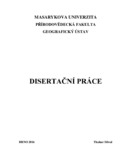Please use this identifier to cite or link to this item:
http://archive.nnl.gov.np:8080/handle/123456789/186| Title: | Human-wildlife conflict: Analysis of factors involved in wildlife attacks on humans in and around Chitwan National Park, Nepal |
| Authors: | Silwal, Thakur |
| Keywords: | Wildlife National Park |
| Issue Date: | 26-Mar-2019 |
| Abstract: | Wildlife attack on people in and around protected area, where the same resources are shared by both people and wildlife, is one of the major conservation challenges in getting effective public supports. This study was designed to overcome the long felt gap of identifying the factors involved in human-wildlife conflict, especially wildlife attacks on people during 2003-2013 in and around Chitwan National Park, first designated protected area in Nepal, and analyzed in a comprehensive way. This study used data collected from various sources: incident site observations, discussion with stakeholders, key informant interviews, and questionnaire survey from victims/or relatives. The results showed that wildlife attacks were significantly correlated to the factors: incident site, wildlife species, season/month/time, gender, education or awareness and activities. The attack substantially fluctuated, ranging from 16 to 48 every year (30 attacks per year), but was steadily increasing in recent years. Patterns of attacks were significantly uneven (p < 0.0001) across the months, and 89% attacks occurred outside the park. Of the total, 74% attacks occurred in the buffer zone forests and croplands within one km from the park. About 87% attacks occurred during day time and 63% in the morning. Most of the victims were adults and attacks occurred during collection of forest resources, working in farms, fishing, herding cattle and working in house/or bed time. More than 50% of victims were uneducated and unfamiliar to the attacking animals‟ behavior. Species-specific attacks involved were 38% by rhino (Rhinoceros unicornis) alone, 21% by tiger (Panthera tigris), 18% by sloth bear (Melursus ursinus), 9% by elephant (Elephas maximus), 8% by wild boar (Sus scrofa) and 6% by others. There was a strong positive correlation among the number of victims for all attacking animals with a maximum of one victim per 4 km2 except elephant and wild boar. Density of bear victims was higher where the tiger and rhino victims were lower, e.g. in Madi valley. Injury severity was significantly correlated to the attacking animal species (p <0.0001), with occurrence of fatality cases by 30%, and the rest suffered with minor to serious injuries. About 68% attacks caused by elephant were fatal cases followed by tiger (57%), rhino (29%), bear and wild boar (each 4%). Of the total, 84% fatalities occurred at incident sites, where some victims had lost their lives due to delay in rescue operation and first-aid treatment. |
| Description: | MASARYK UNIVERSITY FACULTY OF SCIENCE DEPARTMENT OF GEOGRAPHY |
| URI: | http://103.69.125.248:8080/xmlui/handle/123456789/186 |
| Appears in Collections: | 300 Social sciences |
Files in This Item:
| File | Description | Size | Format | |
|---|---|---|---|---|
| PhD desertation_Sept 2016.pdf | 7.59 MB | Adobe PDF |  View/Open |
Items in DSpace are protected by copyright, with all rights reserved, unless otherwise indicated.